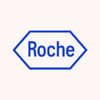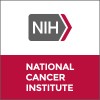
The Safety and Effectiveness of Nevirapine Plus Nelfinavir in HIV-1 Infected Patients Who Have Taken...
HIV InfectionsTo determine the potential effects of 28 days of nevirapine treatment on the steady-state pharmacokinetics of nelfinavir and of stavudine (d4T), and to further evaluate the pharmacokinetics of nevirapine in combination with nelfinavir, and d4T compared to the historical controls treated with nevirapine but without nelfinavir or d4T. To determine the efficacy of long-term combination therapy of nevirapine, nelfinavir and d4T on viral load in patients who are non-nucleoside reverse transcriptase inhibitor (NNRTI) and protease inhibitor naive, and have <= 6 months prior d4T exposure at the time of screening.

A Comparison of Saquinavir Hard- and Soft-Gelatin Capsules in HIV-Infected Patients
HIV InfectionsTo compare the antiviral activity, safety, and pharmacokinetics of saquinavir hard gel capsule (HGC) formulation, to 1 of 3 doses of saquinavir soft gel capsule (SGC) formulation administered orally every 8 hours for 4 weeks.

The Safety and Effectiveness of Zidovudine Plus Lamivudine, Used With and Without 1592U89, in HIV-1...
HIV InfectionsTo compare the safety, tolerance, durability of the viral load response and the antiviral activity of the 1592U89/zidovudine(ZDV)/lamivudine (3TC) regimen vs. ZDV/3TC regimen. To determine the clinical efficacy of the two regimens as measured survival, disease progression, weight growth velocity, and neuropsychological or neurological changes. To assess the development of viral resistance and relative pharmacokinetics associated with each regimen.

Safety and Effectiveness of Giving Adefovir (Preveon) Plus Other Anti-HIV Drugs to HIV-Infected...
HIV InfectionsThe purpose of this study is to see if it is safe and effective to give adefovir plus other anti-HIV drugs to HIV-infected patients who have failed other anti-HIV drug combinations. This study will try to make adefovir available to all AIDS patients who need it. Some patients do not respond to anti-HIV drug combinations, even when different combinations are tried. Adefovir may be able to help these patients fight HIV.

A Study of Two Anti-HIV Drug Combinations in HIV-Infected Patients
HIV InfectionsThe purpose of this study is to compare the safety and effectiveness of giving HIV-infected patients delavirdine (DLV) plus zidovudine (ZDV) plus 2 doses of indinavir (IDV) or ZDV plus IDV plus lamivudine (3TC). This study also examines how the body processes DLV when it is given in combination with other drugs.

Intermittent vs. Continuous HAART to Treat Chronic HIV Infection
HIV InfectionThis study will evaluate the effects of intermittent short cycles of HAART (highly active antiretroviral therapy) for treating HIV infection. HAART is a multi-drug regimen that is very effective in suppressing HIV and perhaps slowing or halting progression to AIDS. However, the treatment has significant drawbacks: it cannot completely rid the body of virus; long-term therapy carries a risk of toxicity (harmful side effects); and the regimen is difficult to comply with because many pills and capsules must be taken daily. When patients stop taking HAART, their HIV levels climb again. This study will see if giving HAART in short cycles of 7 days on, 7 days off, can keep viral levels low while maintaining CD4+ T cell counts. HIV-infected people age 18 or older who are receiving HAART and have a viral load of less than 50 copies/ml and a CD4+ T cell count of at least 175 cells/mm3 may be eligible for this study. Candidates will be screened with a medical history and physical examination, blood and urine tests, and possibly a chest X-ray and electrocardiogram. Women of childbearing potential will have a pregnancy test. Participants will be randomly assigned to either continue their current medication regimen or to take HAART in intermittent cycles of 7 days off, 7 days on. Patients will continue treatment for 72 weeks or until viral levels increase or CD4+ T cell counts decline to a level of concern. Upon entering the study, patients will have blood tests to monitor the amount of virus in the blood, CD4+ T cell count, viral resistance to HAART medications, side effects of the drug, and immune response to HIV in the test tube. They will have clinic visits for a history, physical examination and blood draws every month for 12 months. At that time, depending on T cell counts and viral load, the number of visits may be reduced, but never less frequently than every other month. Patients will also undergo leukapheresis-a procedure for collecting quantities of white blood cells-every 3 to 4 months while on the study. For this procedure, whole blood is collected through a needle in an arm vein (similar to donating blood). The blood is circulated through a cell separator where the white cells are removed, and the rest of the blood (plasma, red cells and platelets) is returned through the same needle or through a second one in the other arm. The collected white cells are used for special studies on the level and function of T cells and to detect hidden virus.

Differences in Blood Levels of Nevirapine in HIV-infected Patients in Uganda and the United States...
HIV InfectionThis study will determine whether blood levels of the anti-HIV medicine nevirapine are different in HIV-infected patients in the United States from patients in Uganda. People from all over the world take medications to treat HIV infection. These medicines work well in some people but not in others, and they cause harmful side effects in some people and not in others. These differences may be related to variations in how much of the drug reaches the blood. Differences in drug blood levels among people in various areas of the world may be attributed to differences in diet, state of health, ability to absorb the medicines from the stomach, ability to eliminate the drugs from the body, and the brand of medicine taken. This study will help scientists learn whether differences in blood levels of HIV medicines are important in determining how well the drugs work in different patient populations. HIV-infected patients 18 years of age and older in the United States and in Kampala, Uganda who have been on an antiretroviral treatment regimen that includes at least 28 consecutive days of nevirapine may be eligible for this study. Candidates will be screened with a medical history, physical examination, and blood tests. Participants will have a total of approximately about 5 ounces of blood drawn during this 6- to 8-hour study. They will come to the NIH clinic in the morning, and a catheter (plastic tube) will be inserted into an arm vein for collecting blood. (Alternatively, blood can be collected by a needle inserted into an arm vein.) Blood will be withdrawn according to the following schedule: About 5 tablespoons will be collected upon arrival at the clinic after an overnight fast. Within 30 minutes of this blood draw, the patient will have breakfast and take his or her morning dose of nevirapine, along with any other medications that need to be taken at that time. 1 tablespoon of blood will be drawn 2 hours after the nevirapine dose. 1 tablespoon of blood will be drawn 4 hours later (6 hours after the nevirapine dose). The blood will be analyzed for levels of nevirapine and possibly other HIV medicines. Some of the blood will be stored for later analysis of genes (cytochrome P450 and MDR1) that are involved in eliminating medicines from the body. ...

Capravirine to Treat Children With HIV Infection
HIV InfectionThis study will test the safety, side effects and anti-HIV activity of different doses of capravirine in children and adolescents with HIV infection. Capravirine belongs to a class of drugs called non-nucleoside reverse transcriptase inhibitors (NNRTIs), which prevent the virus from replicating (making more copies of itself). Other NNRTIs are nevirapine, delavirdine and efavirenz. HIV-infected children between the ages of 4 months and 21 years may be eligible for this study if they: 1) have received less than 6 weeks of treatment with antiretroviral drugs; 2) have not benefited from antiretroviral therapy after 12 weeks of treatment; 3) cannot continue antiretroviral treatment because of harmful side effects. For the first week of the study, participants will have a 1-week "washout period" in which they will receive no anti-HIV therapy. During this time, they will have physical, eye and neuropsychologic examinations, blood and urine tests, echocardiogram, electrocardiogram (EKG), chest X-ray, head CT scan and skin tests. These physical exams and tests will be repeated throughout the study to determine changes in health. After the washout period, patients will take capravirine once a day in the morning for 6 days. After each dose, a small amount of blood will be drawn at 8 different times over 12 hours to measure the activity of the drug and HIV blood levels. A heparin lock will be placed in the vein to avoid multiple needlesticks. After the 6 days of capravirine there will be another washout period, this time for 21 days. During this time, doctors will determine the optimum combination therapy for the individual patient. After the second washout, patients will begin combination therapy with capravirine plus at least two other anti-HIV medicines. (These may include a reverse transcriptase inhibitor such as zidovudine, didanosine, lamuvidine, zalcitabine, or stavudine, and maybe one or more protease inhibitors such as ritonavir, nelfinavir, saquinavir, indinavir or amprenavir.) For the first week, patients will have a daily blood test to determine HIV blood levels. Afterwards, treatment will continue on an outpatient basis with clinic visits every 4 to 8 weeks for physical exams, lab tests and other procedures as required. The study will last approximately 48 weeks. Patients who benefit from capravirine therapy may be able to continue to receive the drug from the drug company sponsor or as part of another study, or the protocol for this study may be amended to lengthen the treatment period.

The Effects of Anti-HIV Therapy on the Immune Systems of Children and Young Adults Infected With...
HIV InfectionsThe purpose of this study is to determine the number of newly formed CD4 cells in children who have taken anti-HIV drugs. The study will also evaluate the effectiveness of the new CD4 cells in producing an immune response to hepatitis A and tetanus toxoid vaccination. Study hypothesis: 1) Immunologic reconstitution of individuals who have less than 15% CD4 cells may or may not be associated with functional activity. 2) The functional immunologic responses to recall and newly experienced antigens may be different. 3) The functional responses to antigens delivered in vaccine format may be a function of CD4 level, viral load, or both.

Therapeutic Drug Monitoring and Viral Resistance Testing in the Treatment of HIV-Infected Children...
HIV InfectionsThis study will evaluate a new treatment strategy called therapeutic drug monitoring (TDM) in HIV-infected children and adolescents. TDM involves analyzing the virus, giving drugs the virus is most sensitive to, monitoring drug blood levels to make sure there is enough drug to work against the virus, and changing the drug dose if it is too low. HIV-infected children between 0 and 21 years of age who may benefit from treatment with a protease inhibitor and who are not benefiting from their current antiretroviral drug treatment regimen may be enrolled in this 48-week study. Patients who are not currently receiving antiretroviral treatment, including patients who have never received antiretroviral treatment, may be enrolled in the study. Participants will have blood drawn to learn what anti-HIV drugs the patient's virus is resistant to-that is, what drugs are no longer effective against the virus. This is determined by analyzing the virus's genotype (detailed genetic structure) and phenotype (response to exposure to anti-viral drugs). Based on these test results and the patient's prior medication history, a drug regimen tailored to the individual patient will be prescribed. It may include one or two nucleoside reverse transcriptase inhibitors, such as zidovudine, didanosine, lamuvidine, zalcitabine, stavudine), a non- nucleoside reverse transcriptase inhibitor such as nevirapine or efavirenz, and a protease inhibitor such as amprenavir, nelfinavir, saquinavir, ritonavir, or Kaletra (a combination of lopinavir and ritonavir). After the patients begin treatment, the amount of the protease inhibitor in the blood will be measured. If not enough of the drug is found in the blood, the dose of the drug will be increased and the amount of the drug in the blood will be checked again. In this study, the dose may be increased up to three times. Patients will be seen in clinic for 6 days when treatment begins to measure blood levels of the medicines and evaluate the response of the virus. Treatment will then continue on an outpatient basis. Drug levels will be measured periodically throughout the study. The viral load will also be measured and additional tests to determine whether the resistance pattern of the patients' virus has changed. In addition, patients will undergo the following tests and procedures at various times throughout the study, more frequently for the first few months and then less often: Blood tests to measure cell counts and viral load Routine laboratory tests to measure kidney, liver, bone marrow, and other organ functioning Eye and neuropsychologic examinations Echocardiogram (heart ultrasound) Electrocardiogram (EKG - heart rhythm test) Chest X-ray Computed tomography (CT) scan of the head Skin tests To make sure the medicines work, they must be taken as directed. In addition, since higher than usual doses of some of the anti-HIV drugs may be given, it will be important to know whether the patients are taking all of the medicine that has been prescribed. This study will therefore also measure patients' adherence to their medication regimen in two ways: 1) some medicines will be packaged in a bottle with an electronic medicine bottle cap that will record when the bottle is opened, and 2) patients and their parents will be interviewed by phone or in person at various times during the study about adherence and may be asked to fill out forms that record the number of doses taken. This will allow the doctor and patient to work together to make sure the medicines are being taken properly. Patients and parents will also be interviewed periodically about their understanding of HIV disease, about social supports that are available, and about the child's emotional adjustment.
